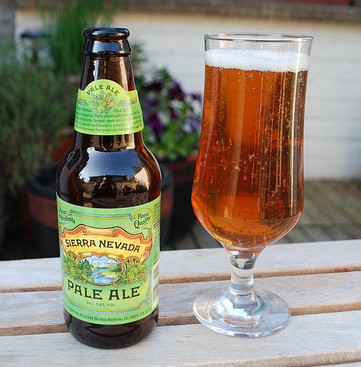Breweries in Galveston Texas: Local Craft Beer Adventures
Breweries in Galveston Texas: Local Craft Beer Adventures
Blog Article
Mastering the Craft of Distillation: a Deep Dive Into Distillery Traditions
Discovering the complex art of purification introduces a world steeped in time-honored traditions that have formed the spirits we delight in today. From the ancient origins of distillation strategies to the modern-day advancement of distillery tools, each step in the process brings with it an abundant tapestry of background and competence. As we explore the delicate equilibrium of contemporary versus traditional distilling practices and uncover the importance of essential active ingredients, a much deeper understanding emerges of the extensive influence distillery customs carry the spirits we enjoy.
Origins of Distillation Techniques
The growth of distillation methods has an abundant history that traces back to old people. The concept of dividing parts based on their various boiling points laid the structure for the innovative purification procedures we have today.
The earliest evidence of distillation dates back to around 3000 BC in Mesopotamia, where clay pots were used to distill perfumes and aromatic oils. The Egyptians further advanced these techniques, utilizing distillation for medical functions and embalming practices. The Greeks, notably numbers like Aristotle and Hippocrates, contributed to the academic understanding of distillation.
Over time, distillation infect areas like India, China, and the Center East, each culture including its one-of-a-kind touch to the craft. The evolution of distillation strategies proceeded through the Center Ages and the Renaissance, at some point causing the varied variety of distillation procedures utilized in modern distilleries worldwide.
Evolution of Distillery Tools

With advancements in modern technology and a much deeper understanding of the distillation process, contemporary distilleries now utilize a range of sophisticated tools to generate spirits of the finest. Today, purification devices consists of column stills, reflux stills, and crossbreed stills, each developed to cater to details distillation requirements. These modern-day stills offer much better temperature level policy, boosted purification accuracy, and higher performance in dividing alcohol from contaminations.
Along with stills, distilleries currently utilize innovative condensers, fermenters, and filtration systems to more improve the extract. The advancement of distillery tools proceeds to play a vital function fit the diverse variety of spirits readily available in the market today.
Traditional Vs. Modern Distilling Practices
On the other hand, modern distilling practices take advantage of innovative technology and development to improve production processes and improve uniformity. Automated systems, digital controls, and state-of-the-art devices allow contemporary distilleries to produce spirits extra successfully and with better accuracy.
While standard distilling techniques are valued for their heritage and the special tastes they create, modern techniques provide advantages in terms of scalability, top quality control, and sustainability. By including scientific innovations and contemporary engineering, distillers can enhance manufacturing, reduce waste, and satisfy the demands these days's market better. Inevitably, the selection in between typical and contemporary distilling methods typically relies on the distillery's objectives, worths, and target market.
Trick Ingredients in Distillation Process
Within the craft of purification, the option of key ingredients plays a vital role in establishing the flavor account and quality of the spirits produced. The key ingredients made use of in the purification procedure are typically water, yeast, and a fermentable resource such as grains, fruits, or sugarcane.
Water is a basic component as it not only thins down the alcohol content to a tasty level but also impacts the overall mouthfeel and appearance of the spirit. The quality and mineral content of the water used can substantially influence the end product.
Yeast is one more essential component that transforms the sugars existing in the fermentable source right into alcohol through the procedure of fermentation. Various pressures of yeast can produce varying aromas and tastes, adding to the one-of-a-kind characteristics of the spirit.

Influence of Distillery Traditions on Spirits
The influence of historical distillery customs on spirits extends past the choice of essential ingredients, shaping the really essence and character of the last distilled items (Breweries in Galveston Texas). These customs, gave via generations, play a crucial duty in defining the one-of-a-kind taste accounts and top click for more qualities that identify one spirit from another
Distillery practices include a wide variety of techniques, from the particular methods used in distillation to the choice of maturing procedures used. The use of standard copper pot stills in scotch production is believed to give particular tastes and characteristics that are extremely valued by lovers. In why not try here a similar way, the aging of spirits in oak barrels, a technique deeply rooted in distilling practices, adds to the development of intricate fragrances and flavors in time.

Final Thought
From the origins of distillation methods to the modern-day techniques, the influence of distillery traditions on spirits is undeniable. Distillery practices play an essential role in forming the spirits market and protecting the heritage of purification practices.
Throughout the background of purification, the devices utilized in distilleries has actually gone through significant evolution to enhance performance and top quality of the distillation process.With innovations in innovation and a much deeper understanding of the distillation process, modern-day distilleries now utilize a selection of advanced devices to produce spirits of the greatest high quality. Today, purification tools consists of column stills, reflux additional reading stills, and crossbreed stills, each created to provide to specific distillation requirements. From the origins of distillation strategies to the contemporary practices, the impact of distillery traditions on spirits is undeniable. Distillery traditions play an important role in shaping the spirits industry and preserving the heritage of purification techniques.
Report this page